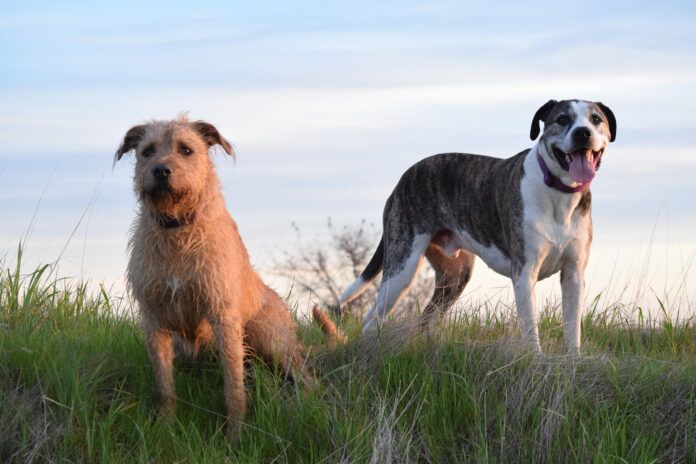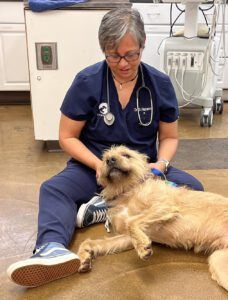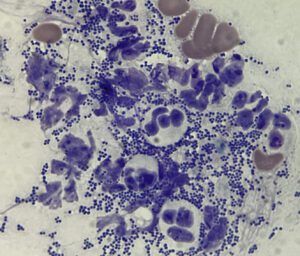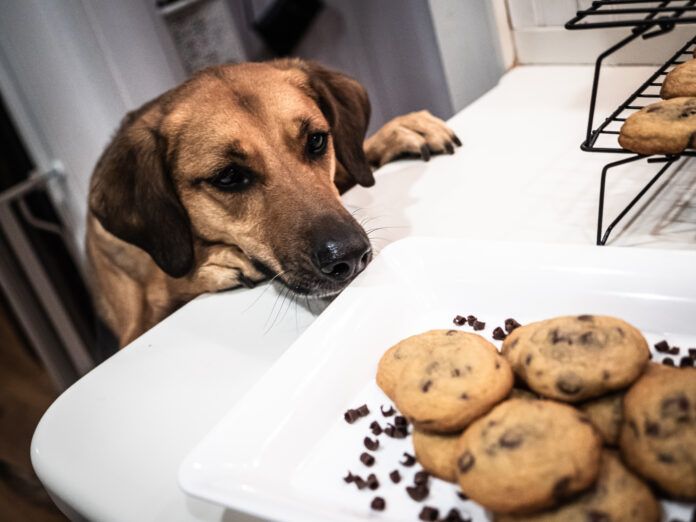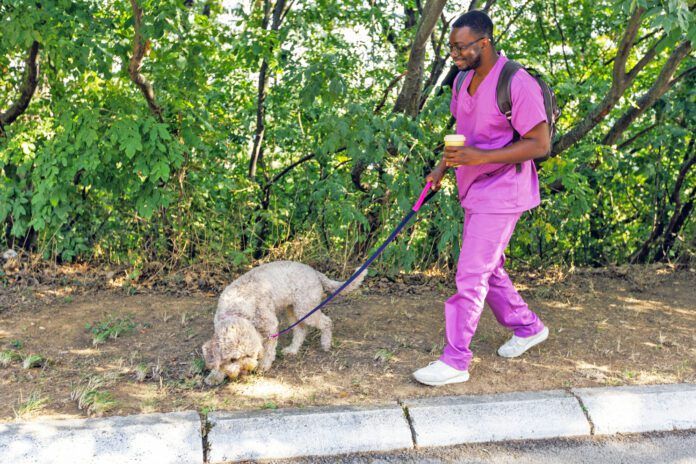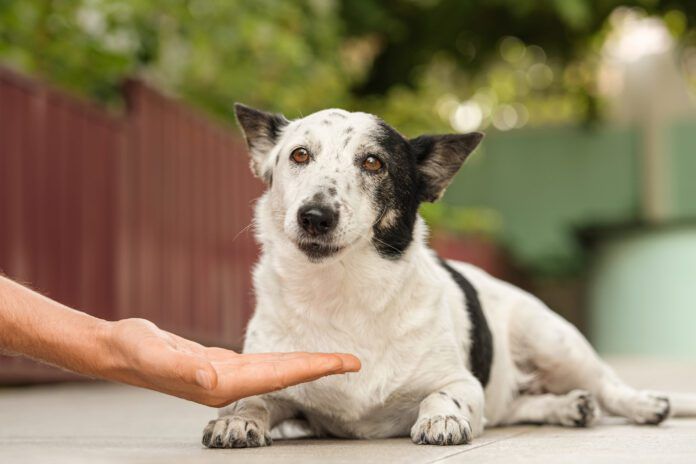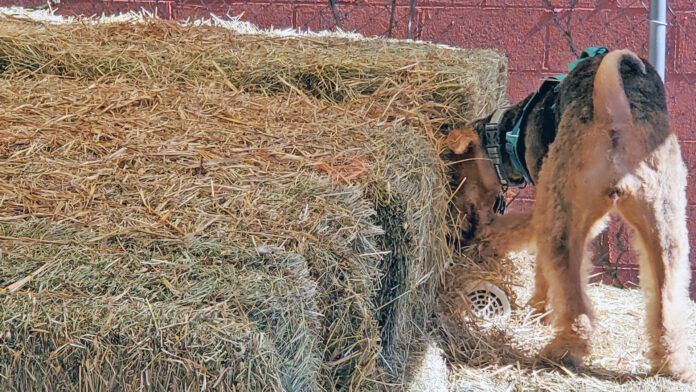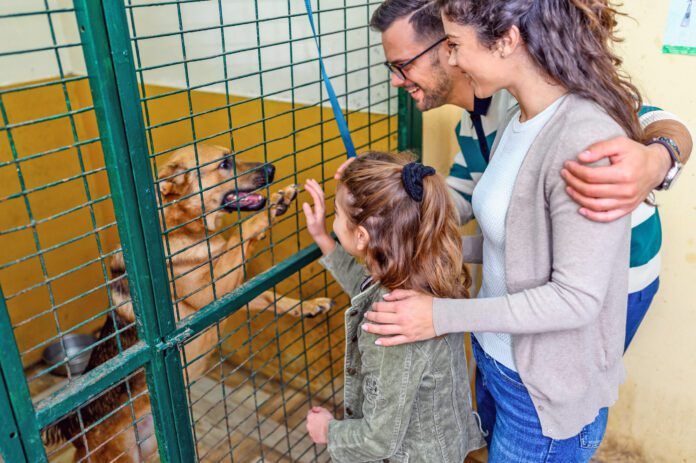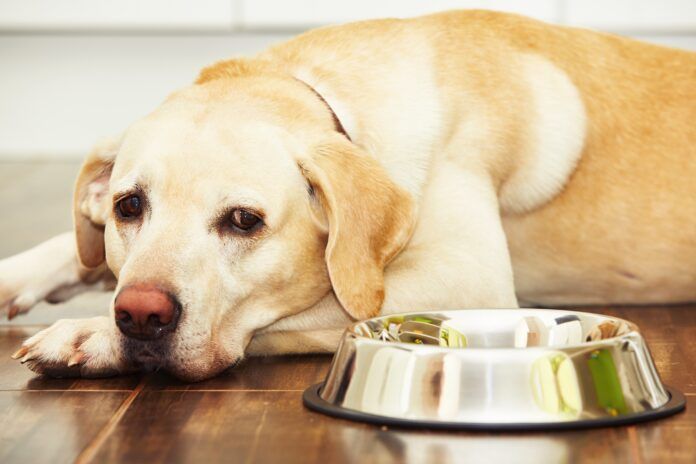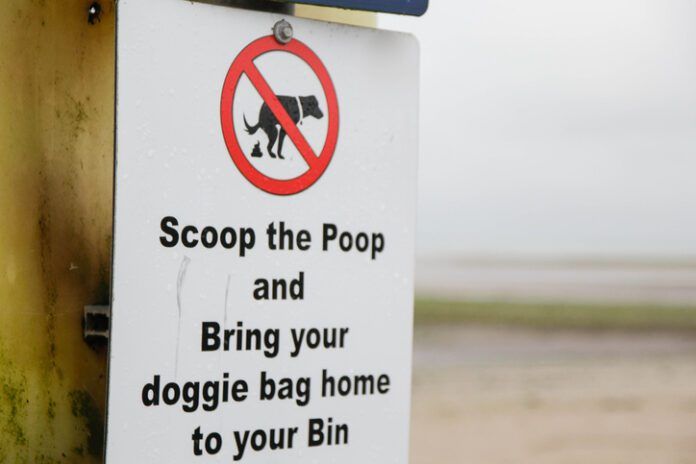There’s no doubt that Doodles are cute. The fluffy, curly coated puppies can make anyone’s heart melt, but should you buy one from a breeder? The main draws of Doodles—a “hypoallergenic” coat and a family-friendly temperament—are not always consistent.
Who Invented Doodle Dogs?
The first popularized Doodle was a Labrador Retriever and Poodle mix, bred in 1989 by Wally Conron as a guide dog prospect. He aimed to create a dog with the temperament of a Lab, but the non-shedding coat of a Standard Poodle for a woman who needed a guide dog, but whose husband had dog allergies.
Conron bred one of his Labs to a Standard Poodle, and ended up with a litter of three puppies. After sending hair and saliva samples for testing, it turned out that only one dog of the litter of three inherited the non-shedding coat. After sending along a puppy to the woman, Conron was left with two guide dog prospects that no one wanted since they were mixed breeds. He then began marketing them as a new breed called a Labradoodle with help from the Guide Dogs Victoria PR department, and the trend caught on.
In a 2014 interview with Psychology Today, Conron said that he regrets popularizing Doodle breeding. “I opened a Pandora’s box, that’s what I did,” he said. “I released a Frankenstein. So many people are just breeding for the money. So many of these dogs have physical problems, and a lot of them are just crazy.”
Why are Doodle Dogs So Popular?

The original marketing ploys of the Labradoodle live on even today. Poodle mixes are often described as wonderful family pets that come in all colors and sizes, have good temperaments, and are hypoallergenic. Designer dogs and mixed breeds like Doodles are often marketed as healthier than purebreds, though this idea has since been debunked.
Whether the above points are true or not depends on multiple factors, including the health of the parent dogs, which two breeds are being mixed together, the socialization that the breeder does, and more.
“I think [Doodles] are popular because a lot of them are cute and the general population is not informed about ethical breeding practices,” says Madeline Block, a Doodle and Poodle owner and dog content creator based in Cincinnati, Ohio. “There is a lot of biased misinformation that people find and they are often advertised as easy, family friendly dogs which a lot of people are drawn to.”
Are Doodles Hypoallergenic?
Doodle mixes are hybrids of two different breeds, not a true breed. This matters in that the results of breeding a purebred dog like a Golden Retriever or a Labrador Retriever and a purebred Poodle will not be consistent across a litter. Because of this, breeders can’t promise all puppies will be non-shedding (there is no such thing as a truly hypoallergenic dog). Though Doodles are marketed as having only the best traits of each breed, that’s not quite how genetics work.
When breeding dogs of two different coat types, you can end up with a lot of different options. There are certain genes the puppies can inherit from the parent dogs that make them shed more or less as well, so you truly can’t predict their level of shedding. You can end up with puppies that are shedding, low-shedding, or a mix of the two.
“Many think that Doodles are hypoallergenic but that is not true,” says Block. “They may produce less allergens and people with allergies may do okay with them but a dog that is a mix between a low shedding dog (Poodle) and a shedding dog (like a Golden, Aussie, Bernese, etc.) still has the chance to shed and produce allergens.”
Block also explains that Poodle mixes can be prone to matting. She says that when you mix multiple types of hair together, the hair essentially becomes Velcro. Loose hairs get stuck in the coarse outer coat, and mats can form, which can be very painful for the dog. “This is one reason why there are so many Doodles that get shaved down at the groomer because people think that they won’t shed and they don’t maintain the coat regularly,” says Block.
Can Doodles be Ethically Bred?

Some of the primary goals of ethical breeding are to improve health, temperament, and ability with each generation of dogs. There is also a duty of care when it comes to how puppies and breeding dogs are raised, handled, and cared for throughout their lives. Breeding dogs ethically is a difficult task even when extensive records have been kept on the dogs being bred. It’s hard enough for breeders of purebred dogs, who often have access to breed databases, health records, and other breeders familiar with the genetic lines in question. Breeders of Doodles and other designer dogs rarely have similar resources, making it even more difficult—and therefore less likely—to breed such dogs ethically.
Violet Arteaga, a breeder of Poodles and Collies located in Broomfield, Colorado, explained some of what it takes to be an ethical preservation breeder, which many Doodle breeders don’t meet. Though not exhaustive, the main points we’ll explore are health, breeding proven dogs, striving to better the breed, and not contributing to overcrowded shelter populations.
Health Testing
Firstly, Arteaga notes the importance of starting out with good breeding stock. Arteaga is referring to the breeding dogs’ health history and lineage. To breed healthy, sound puppies, a breeder needs to start with dogs who have been proven (more on what that means later) and health tested for generations to avoid breeding dogs with hereditary health problems.
“Health testing is a huge thing for Poodles,” she says. “Hips, elbows, eyes, heart and much, much more is a must. Studying pedigrees and selecting the right stud for your girls (looking at what you need/want to improve on) is also important.”

Most ethical preservation breeders test their dogs’ hips, elbows, and eyes before breeding them. They may also test for heart, thyroid, and genetic conditions specific to their breed. These tests often cost hundreds, if not thousands, of dollars depending on how many need to be done.
Recommended health tests vary by breed. Looking for a breeder who is involved in the national parent club of the breed you’re interested in is a good starting point. These parent clubs act as a guiding body for breeders, typically publishing a code of ethics and list of recommended health testing for their breed.
The codes of ethics of many national parent clubs explicitly and strongly advises against mixed breedings. The Poodle Club of America, for example, states that members should “Never intentionally allow a Poodle to be bred to any other breed.”
Though there is nuance to this, generally, anyone breeding Poodle mixes would not have a dog from extensively health tested and proven lines since most ethical breeders are interested in preserving and bettering their specific breed. This means that Doodle breeders are often starting out their programs with sub-par breeding dogs (i.e. Dogs that haven’t been proven or health tested, and dogs who came from questionable breeders themselves).
This means that you’re more likely to have health or temperament issues by buying a puppy from these breeders. Is it possible you could get a perfect puppy with no issues? Yes. But you’re not stacking the deck in your favor.
Remember: just because a dog is purebred does not mean it’s well bred. A Doodle breeder can easily hop on the internet and find an “AKC registered Poodle” to use in their Doodle breeding program. AKC registration is not an indication of proven or health tested dogs.
What Does It Mean to Have a Proven Dog?
Having a proven dog means that the dog has met standards designed to demonstrate that he or she is worthy of being bred. Proven dogs have either been shown at conformation dog shows and been evaluated structurally against their breed standard or have proven that they’re able to do other work, like dog sports, hunting, herding, or guarding livestock.
Conformation dog shows are a way to judge a dog against the breed standard (a written description of the breed’s physical characteristics) by an unbiased third party. The whole point of these shows is proving that your dog is worthy of being bred. Proven dogs are often conformation champions in the AKC, UKC, or other registries, and many have titles for other sports.
Doodles can be proven in dog sports (though they need to be spayed or neutered to compete in AKC-specific sports), therapy work, and service dog work. However, because they are a mixed breed, they cannot be shown in conformation shows. Since there are so many different kinds of Doodles, there is no singular breed standard.
Why are Doodles So Expensive?
In short, Doodles are expensive because they are popular. Many people will pay a lot for the promise of a cute, friendly, healthy, hypoallergenic dog—even if what they get might not match up with their expectations. Unfortunately, this also means there is no shortage of people looking to make money by breeding them and prices go up accordingly.
“My Doodle cost more than my well-bred Poodle and that is crazy to think about considering how much my Poodle breeder did that my Doodle breeder did not do,” says Block.
Do Doodles Make Good Pets?

Doodles can potentially make good pets. There’s always a possibility that you’ll get a dog with a good temperament, good health, and a non-shedding coat when you buy a Doodle. The issue is that these traits are not always consistent.
“With getting a dog from a mixed breed breeder, you never know what you’re going to get in regards to temperament, health, coat, size, etc.,” says Arteaga.
However, many people love their Doodles, despite the unpredictability. “There are a lot of common misconceptions about Doodles but I would like to also note that there are a lot of people who actually really like their Doodles and they make fine pets,” says Block.
Block herself owns a Poodle mix who works as a therapy dog. “Once I became informed about ethical breeding practices, I knew my next dog would be a Poodle which was exactly what I was looking for,” she says. “I wanted another dog that could do therapy work that was more sound overall for the work.”



